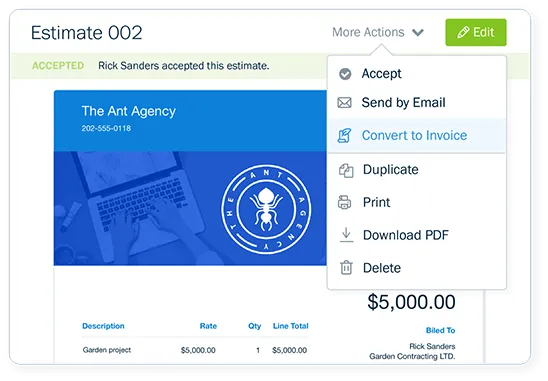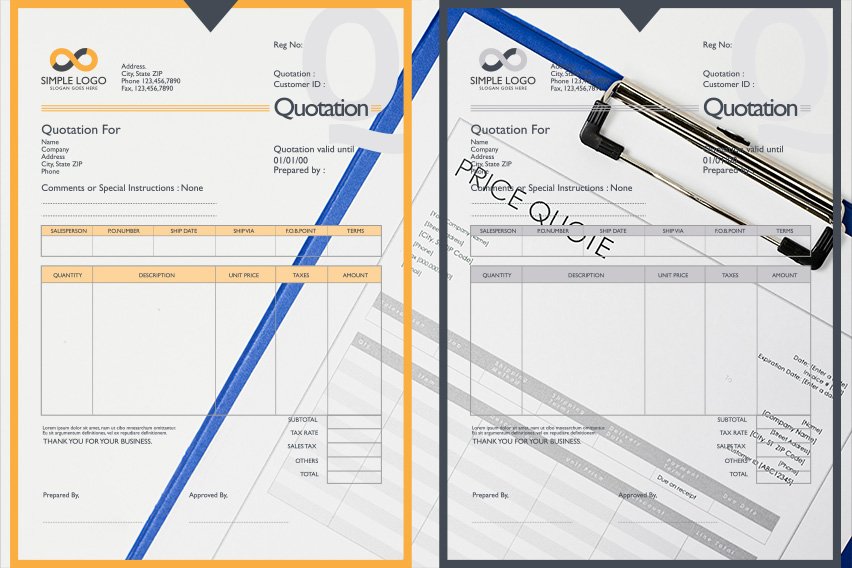5 Simple Steps to Making Successful Bids: Tips for Small Businesses

Has a new project ever tempted you, but don’t know how to bid on a job? Whether you’re a freelancer or a new contractor, bids are an important part of obtaining new work for your company. They can expand your clientele and increase your visibility. However, the construction bidding process can be labor-intensive, with plenty of research and due diligence needed. You must also decide if the project you’re bidding on is right for you and your company.
In this article, we’ll walk you through how construction bids work, 5 steps to making a successful project bid, and some extra tips when doing so. Using the best proposal software can streamline this process and enhance your bid management strategy.
Key Takeaways
- Estimation tools can give you a fuller idea of a construction project’s scope and help you plan your bid.
- Try to think of all the project costs to give an accurate estimate and make a reasonable profit.
- Don’t undersell yourself and submit a lower bid to win—chances are it will cost you more in the long run, and you will lose out.
- Consider proposals carefully, just because you’ve been asked to bid on construction jobs doesn’t mean they’re right for you and your company.
Here’s what we’ll cover:
- How a Bid Works
- 5 Steps to Making a Successful Bid
- How Does Construction Bidding Work?
- Tips When Bidding on a Job
- Conclusion
How a Bid Works
Many companies and organizations, from nonprofits and private sector businesses to government agencies, send prospective suppliers “requests for proposals (RFPs).” The suppliers or contractors then need to send a proposal or bid back for consideration.
Your bid introduces your company, explains your contractor’s qualifications, and provides an accurate estimate for the project based on market conditions and the contract type.
Follow the bid instructions and consider your proposal carefully. Combining research and a thoughtful estimate for a construction project could land you the work and open doors to more requests for proposals.
Luckily, software programs like FreshBooks can help. Regardless of your industry, with the right strategy and effective bidding, FreshBooks Estimating Software can help you plan your construction bid and support your project from start to finish. And you can try it for free!
5 Steps to Making Successful Bids
1. Decide If You Want the Project
Just because you receive an RFP or a prospective customer asks you to bid on a job doesn’t mean you have to. Carefully consider the project’s proposal and honestly review if your company is qualified and has the needed expertise and criteria to succeed. A bid is a labor-intensive document to create, and you shouldn’t submit one unless you’re really interested in the project. Ask yourself if you have the solid understanding and the expertise to do the job and will likely be chosen. Sometimes the time taken to craft a bid isn’t worth it if you see that the criteria are restrictive. It’s ideal if you find the project interesting and have the needed expertise and project delivery method.

For example, general contractors who specialize in residential projects are a good fit to reply to a bid on construction jobs in the private sector. If you have no experience in a sector or it won’t be possible to travel to the job site easily, the project scope is beyond your company, or if you lose money, it may be smart to pass on submitting a proposal. It would be great to turn a reasonable profit. FreshBooks estimation software can help you decide if a project is right for you and your company.

2. Set Up A Meeting With The Client
Read through the RFP again and write down any questions you have for the potential client. Now it’s time to set up a meeting with the client.
Not all companies will want to meet with you. But it’s in your best interests to see if the project’s really worth your time, explain your experience, and set up a working relationship with the client to improve your chances of winning the job.
An in-person meeting is best, but a teleconference or phone call can also work. Send an email to request a meeting and promise to make it quick. Don’t be discouraged if the prospective client doesn’t want to meet in person. Address any questions or clarifications to your contact in their preferred communication form.
Listen well during the meeting or phone call and ensure you understand the client’s goals and needs.
Ask the following questions:
Why did you ask us to submit a bid?
The answers to this question can give you a good idea about the market and your place in it. If the prospective client says they chose you to bid because they found you online, you know that your website and search engine optimization are working well. If they said someone referred you, or they heard about your good work on another project, you’ve gained valuable information about your reputation.
Why do you think our expertise will fit this job?
This is a good way to talk about your expertise and why you think you would be a good choice.
How many companies did you ask to bid on? Who else is actively bidding on this job?
This is a good sign if there aren’t too many competitors and the small businesses and companies chosen are quality firms.
Why this project, and why now?
This question helps you understand what the client wants from the project. It also gives you the chance to ask questions about current projects and the specifics that show your expertise. Ask about deadlines, too. If an important project has a tight timeline, they’ll be in more of a hurry to select a winning bid.
It’s okay to tell the client that you don’t think the project fits you well. Being upfront (and polite in doing so) is professional and makes a good impression.
Following up with the client is always a good idea if you haven’t been chosen. In this way, you can learn why your bid wasn’t successful and thank them for the opportunity to bid.
3. Calculate Costs and Check Profit Margins
Correctly estimating costs sets you up for success by making sure you turn a profit down the road. If you don’t know how to estimate costs, this article from FreshBooks lists the five best estimating techniques you can use, plus a list of bid apps, software, and calculators to make the task even easier.
In a nutshell, you should list all the required materials for the construction manager, job, or services. Get prices for them and tack on 10 to 15 percent as a service charge.
Then multiply your hourly rate by the number of hours you estimate the job will take. In this case, it’s really helpful to base this on how long similar projects took you in the past.
Add the material costs to the labor costs. Then add a percentage on top to take into account transportation, insurance, and other overhead costs. Adding a profit margin if something goes wrong is also a good idea.
Overhead could include any tools you need to buy and marketing you need to do for the project, though you could also write these costs off.
The final amount should fit the client’s budget and make sense to you. If you need a more detailed explanation, follow our guide on How to Write a Cost Estimate Proposal. We’ve explained a step-by-step process along with examples and tools.
4. Check All the Details
Go over your proposal/bid with a fine toothcomb. Ensure you’ve included everything requested, fulfilled all the requirements, and provided all the requested information. You don’t want your bid rejected because of a technicality. A bid template, like the ones in FreshBooks’ proposal software, may be helpful to follow if you need extra guidance.
Check your costs and numbers. The worst thing you can do is undervalue your service. You may win the bidding if you underbid your competitors, but that won’t help you run a profitable, sustainable business in the future.
5. Send and Pitch Your Bid
Follow the bid instructions but if at all possible, don’t simply mail or email your bid without a personal pitch. Ask the client if you can walk them through the bid in person or at least over the phone. You want to be able to explain the services listed, costs, their amounts, and why your figures may be higher or lower than your competitor’s.
Talking through the bid also prevents miscommunications and gives the prospective client an opportunity to ask you questions. Plus, it helps add a personal element to the bid document.
How Does Construction Bidding Work?
The bidding process is especially common in the construction industry. Here are the common steps to bidding for construction jobs:
- The prospective client submits a bid package to potential contractors. This can include information like project plans, timelines, and specifications. A private bid is one that the client sends only to certain contractors. Public bids are often advertised, and anyone can bid for the job. The federal government is often obligated to advertise bidding.
- Contractors can use estimating software or apps to determine labor and material costs and resources required.
- It’s helpful to organize a site visit to get a sense of potential problems like limited site access.
- Ask the client questions about potential problems or issues you discover.
- Submit your bid document by the required date. Some companies choose the lowest bidder, while others choose the best contractor for the job, no matter the price. A bid may be rejected if it doesn’t provide all the documents and information requested in the bid package.

Tips When Bidding On a Job
It’s important to check all the boxes when formulating a bid on a job. For example, ensure you’ve spell-checked your document and confirmed your contact’s details. Small details matter.
Most importantly, you should:
- Consider the proposal carefully
- Follow the bid instructions exactly
- Make smart estimates
- Don’t undersell yourself
Conclusion
Successful bids don’t just happen. They take time, consideration, and some hard work. Think about your company and if your skills and capabilities are suitable for the job. Just because you’ve been asked to submit doesn’t mean you should. It’s also important not to undersell yourself. Tools from FreshBooks can help you estimate, plan, win more bids yourself, and keep your financial records in order—the rest is up to you. Click here to try it for free today.
People also ask:
- How Do You Make a Bid?
- How Long Does it take a Bid to get Accepted?
- How do I Find a Project to Bid on?
- How Can I be Successful in bidding?
How Do You Make a Bid?
To make a bid, you need to make a bid document. If you haven’t done so before, it’s easier to do so by using a template.
If your client only looks for approximate numbers, you can send a simple estimate with a FreshBooks template. If a new customer would like a lot of detail and information about your company, you can use FreshBooks software to make a professional-looking proposal and easily send it to your client online.
How Long Does it take a Bid to get Accepted?
Some bids take longer than others to complete. For example, construction bidding can depend on permits, weather, and real estate. It can take days, weeks, or even months.
How do I Find a Project to Bid on?
Trade magazines, government websites, and association publications are all good places to start looking for projects to bid on. Checklists of tender opportunities from government sources or from specialty bid referral services. Don’t underestimate word of mouth! Ask your happy customers to tell their friends and colleagues you’re in the market for a new challenge with your construction services.
How Can I be Successful in bidding?
To be successful in bidding on construction projects, there are a few tips for your project estimates:
- Tell them what you know about them to show you’ve done your research.
- Be extremely detailed about what you do and how you’ll do it.
- Describe what resources you’ll be using.
- Give an exact price to your potential customer, not an estimate.
- And always name the date you’ll be completed.
Being forward and transparent with all these can help you to have a more successful bid.
About the author
Kristen Slavin is a CPA with 16 years of experience, specializing in accounting, bookkeeping, and tax services for small businesses. A member of the CPA Association of BC, she also holds a Master’s Degree in Business Administration from Simon Fraser University. In her spare time, Kristen enjoys camping, hiking, and road tripping with her husband and two children. In 2022 Kristen founded K10 Accounting. The firm offers bookkeeping and accounting services for business and personal needs, as well as ERP consulting and audit assistance.
RELATED ARTICLES


 How to Estimate Projects: Top 5 Project Estimation Techniques for Small Businesses
How to Estimate Projects: Top 5 Project Estimation Techniques for Small Businesses Free Estimates: When a Contractor Should Offer Them (And When to Charge a Fee)
Free Estimates: When a Contractor Should Offer Them (And When to Charge a Fee) Is A Quote A Contract: A Primer for Small Businesses
Is A Quote A Contract: A Primer for Small Businesses 5 Reasons Why It’s Important for Small Businesses to Use Estimates
5 Reasons Why It’s Important for Small Businesses to Use Estimates The 4 Key Types of Estimates: A Guide for Trades and Home Services
The 4 Key Types of Estimates: A Guide for Trades and Home Services Free Quote Templates for Google Docs, Excel & Word
Free Quote Templates for Google Docs, Excel & Word